On August 4th, International Owl Awareness Day, WWF and TRAFFIC released an image of the 16 most trafficked owl species in India. Let’s learn more about these species and the reason behind it.
Owls have inhabited almost every landscape of India. Out of almost 216 species of owls found in the world, over 35 of them are found in India. All owl species are protected under the Wildlife Protection Act, 1972, in India. Any form of trade or poaching is a punishable offense. Yet, owl trafficking and illegal trade haven’t stopped. But why do you think these innocent birds are killed?
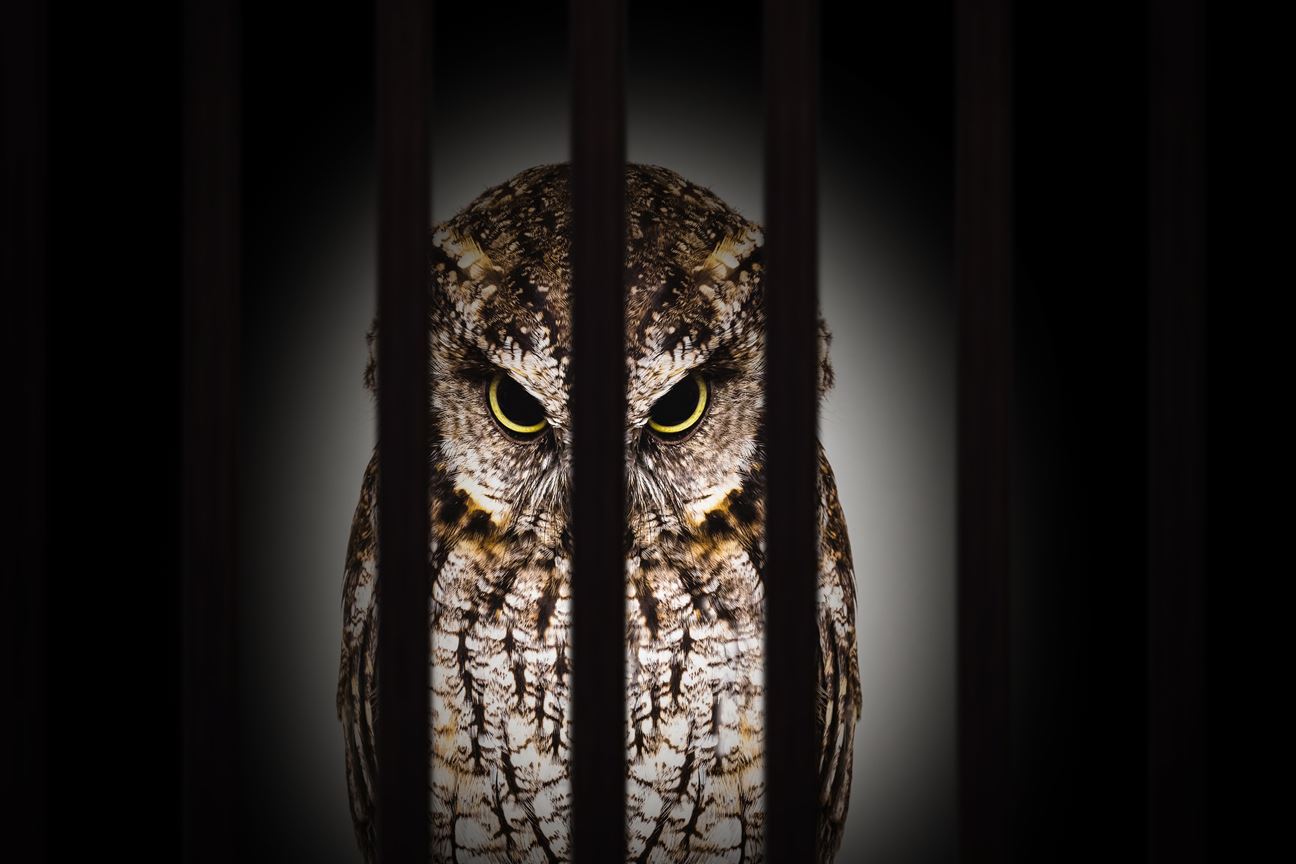
Unfortunately, owls have fallen victim to several superstitious beliefs and rituals of India. The trade and killing have been promoted by local mystic practitioners and the lack of knowledge has given a boost to these illegal activities. Especially in small towns and villages, people are made to believe that sacrificing owls or their parts will solve their life problems. Parts of owls – feathers, skulls, blood, tears, etc. are actually prescribed for ceremonies and rituals, which supposedly bring people good luck and prosperity. These killings are known to increase in Diwali, the festival of lights, because of the irrational thought that this wards off bad luck. The owls are later used for black magic and sorcery, driven by taboos and superstitions. It’s difficult to believe that people think killing a bird that Goddess Lakshmi rides on (and on the day of Lakshmi Puja) will bring them a fortune!
The problem of owl smuggling not only persists in the smaller towns but is also known to happen in large numbers in our capital city and states like Madhya Pradesh, Jharkhand, Rajasthan. Gujarat, Uttar Pradesh, Chhattisgarh, and West Bengal. Some reports have noted that the number can go beyond thousands each year. Another atrocious thought is that owls with tufts, like the Rock Eagle Owl, Dusky Eagle Owl, etc. are thought to possess greater magical powers. That doesn’t mean that smaller species like Spotted Owlets are not killed. They still are! The people behind this generally use the social media platform to contact and reach people for their smuggling business.
Not only for the above mystic reasons, but owls are also hunted for private aviaries, folk medicines, street acts, food, and gambling.
Owls play a vital role in our ecosystem and the only way to stop this is by educating people about the reality of the situation. Let’s learn about the 16 most trafficked species highlighted by WWF and an organisation named TRAFFIC that works to stop the wildlife trade, in detail.
Oriental Scops-Owl
This species can be found in two morphs – one with a rufous colour and the other more spotted with a greyish brown colour. With white eyebrows and black eyes lined with yellow, these small-sized owls can be identified easily. They’re seen in forest edges, semi-open woodlands, and parks feeding on insects and small vertebrates.
Collared Scops-Owl
These medium-sized owls come in various plumages, from grey to brown, and are the largest among the other Scops-Owls. They can be identified by their prominent face lined with black and their ear tufts. These owls can be seen feeding on grasshoppers, beetles, lizards, or even small birds in habitats like lowlands and foothills.
Spotted Owlet
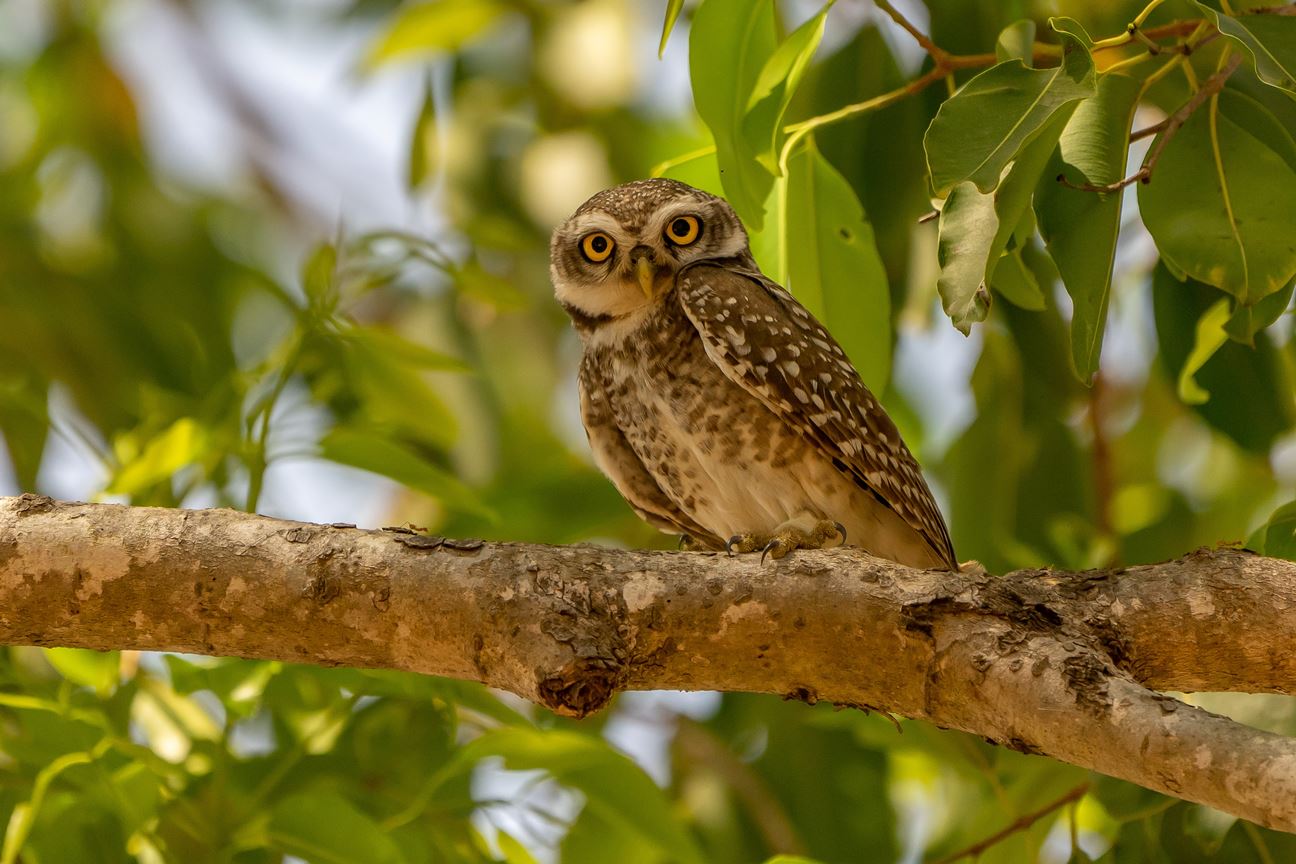
These probably are some of the most commonly seen owls in India. They feature a round head, a greyish brown body, white with brown bars underparts, a short tail, and white spots all over their body. They can be identified by their distinctive white neckband and eyebrows. They’re seen in almost every habitat except wet and dense forests. They seem to be very well adjusted to the city life as they can be found near human habitation. These small birds are seen roosting in hollows of trees.
Jungle Owlet
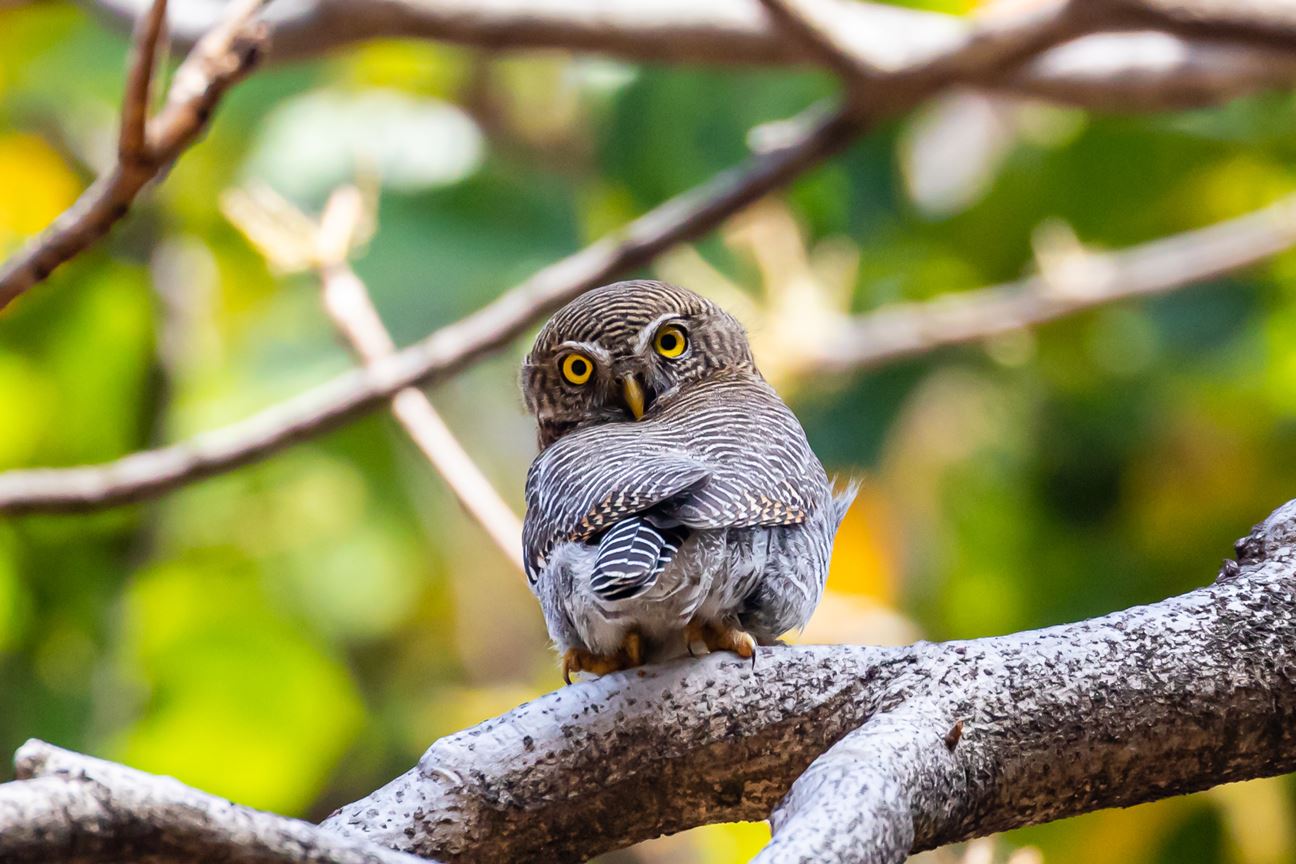
These are small owls characterised by dense barring all over their greyish-brown body. They can be seen foraging for food at dawn and dusk, in dense forests in lowlands and foothills. These small birds are seen boldly taking on prey much larger than them in size.
Asian Barred Owlet
These are medium-sized owls that are widely spread and can be seen easily during the day. They can be identified by their brown body with brown and white streaked underparts. They are found in varied habitats, like gardens and temperate forests.
Mottled Wood-Owl

These are large owls with orange and grey-coloured bodies with unique bold patches. Their underparts are whitish with black streaks and can be identified by their dark-coloured eyes. They are lowland species and can be seen in groves, agricultural lands, and open plantations.
Unfortunately, these birds are known as “kalan kozhi” meaning ‘fowl of death’ in Kerala and its call is believed to be a call of death.
Brown Wood-Owl
These medium-large owls can be identified by their dark-bordered pale face, dark brown upperparts with white spots, and brown-streaked buff underparts. They are nocturnal and can be seen feeding on small mammals and birds in dense forests at night.
Brown Hawk Owl

These are hawk-like-looking small owls, also known as Brown Boobook. They have a brown back, white breast with brown spots, and a highly streaked tail. Their dark brown round head is characterised by a whitish forehead patch. They are found across various habitats, like gardens, agricultural fields, and moderately dense forests, feeding on several insects and mammals.
Barn Owl
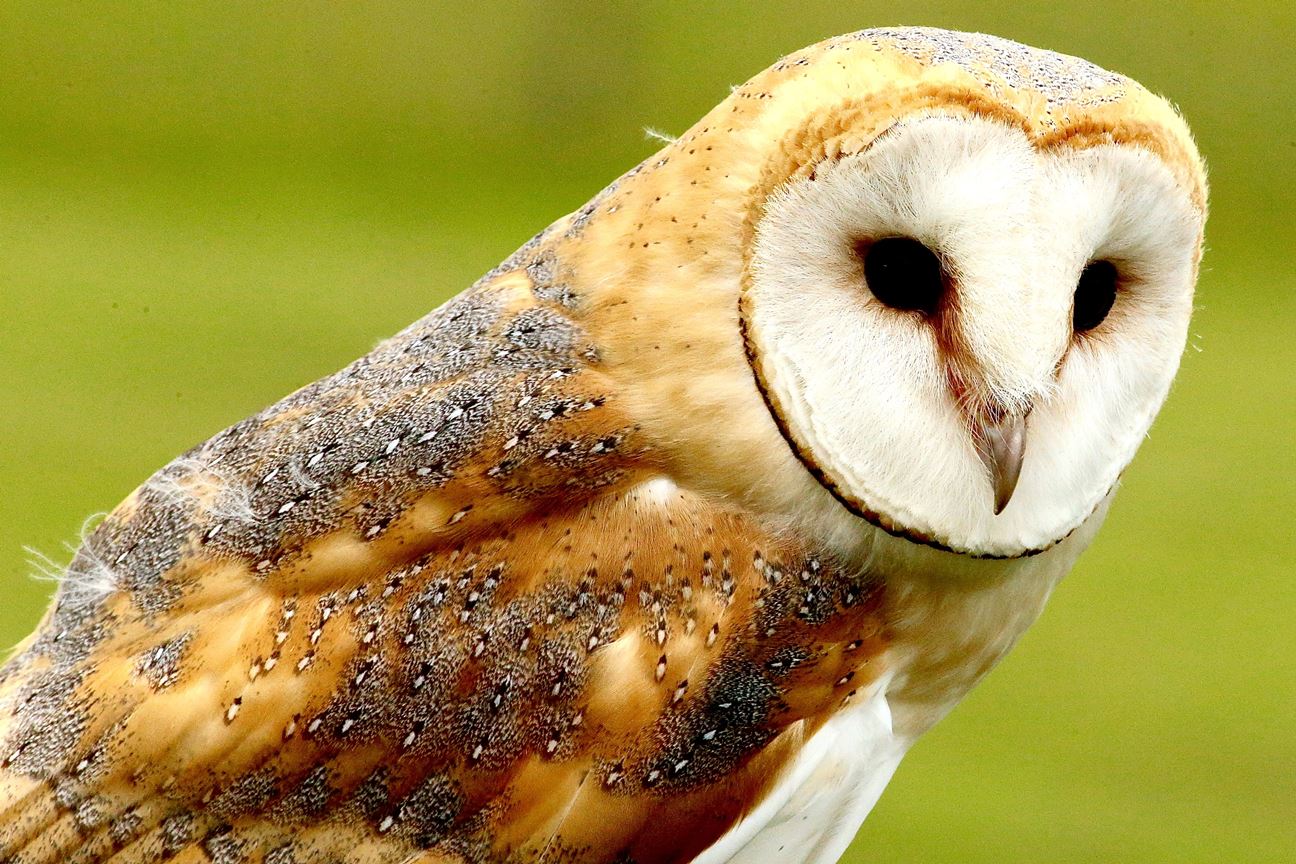
These are the most known owls in the world, famous for their heart-shaped faces. They are pale-coloured with white underparts, orange back with grey spots, and dark eyes. Usually, these owls have been seen nesting in cavities in trees or even buildings and prefer marshlands, grasslands, fields, etc. Their calls sound like someone is screaming and can be terrifying. They’re known for the acute sense of hearing and use it to hunt down small rodents/mammals.
Collared Owlet
These owls can be seen in two morphs – one in rufous and the other in grey. Both morphs are heavily streaked and have dark upperparts, white underparts, and a distinctive eyebrow. These are also called Collared Pygmy Owls because of their small size. But never get fooled by that as they might carry and feed on birds as large as themselves. They also have a melodious call and are seen singing sometimes.
Brown Fish-Owl
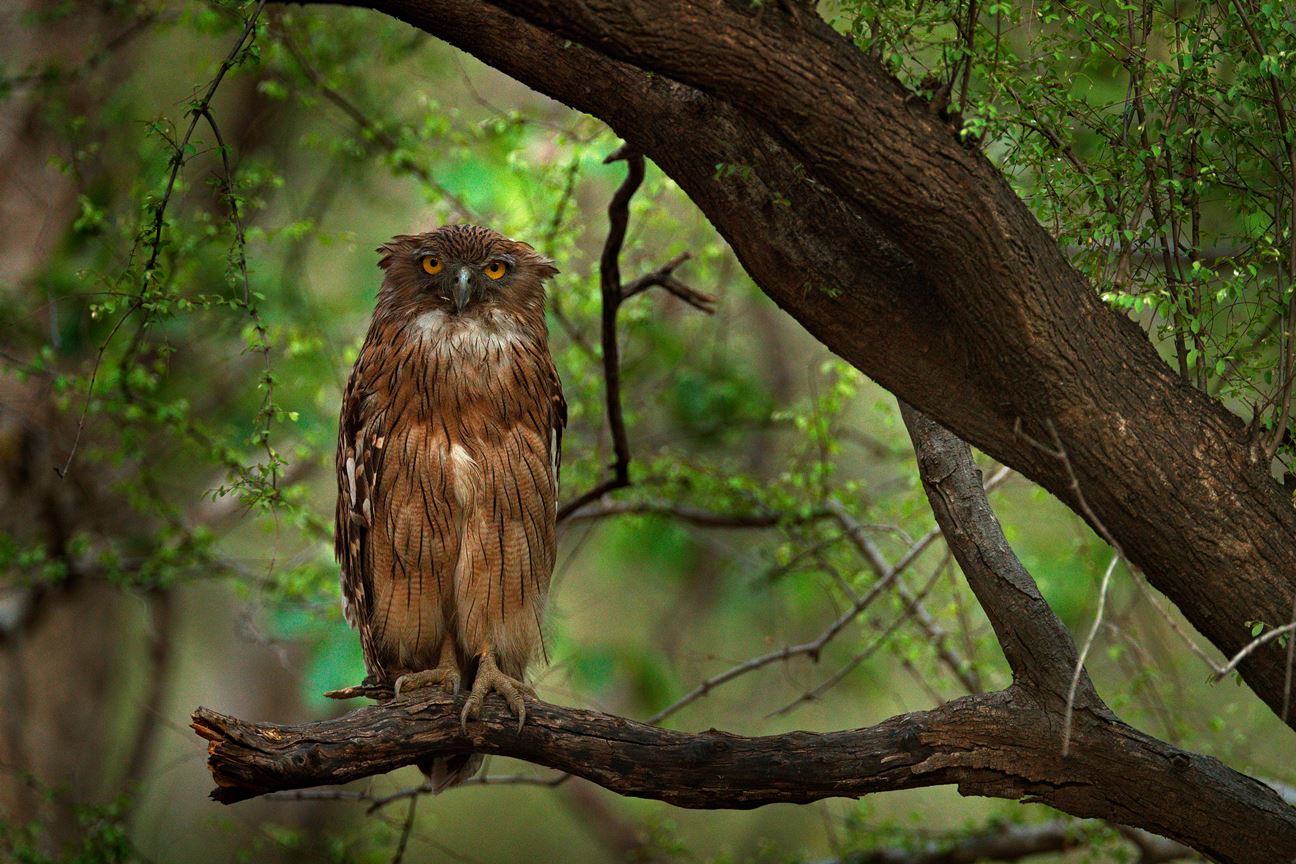
These are large, brown-coloured owls with bright yellow eyes, a streaked breast, patchy wings, and prominent bushy ear tufts. They inhabit waterside areas in mountains and lowlands. They have been seen taking a bath in the shallow waters and feeding on fish, frogs, reptiles, etc. Unlike other owls, these species have a noisy wing beat.
Tawny Fish-Owl
These are larger than the Brown Fish-Owls and have a more northern habitat. Tawny Fish-Owls have a rich brown plumage with beautiful black mottling and drooping ear tufts. They’re also found in dense vegetation near water bodies and feed on fish, frogs, reptiles, and small mammals. These ferocious-looking birds are also quite territorial.
Spot-bellied Eagle-Owl
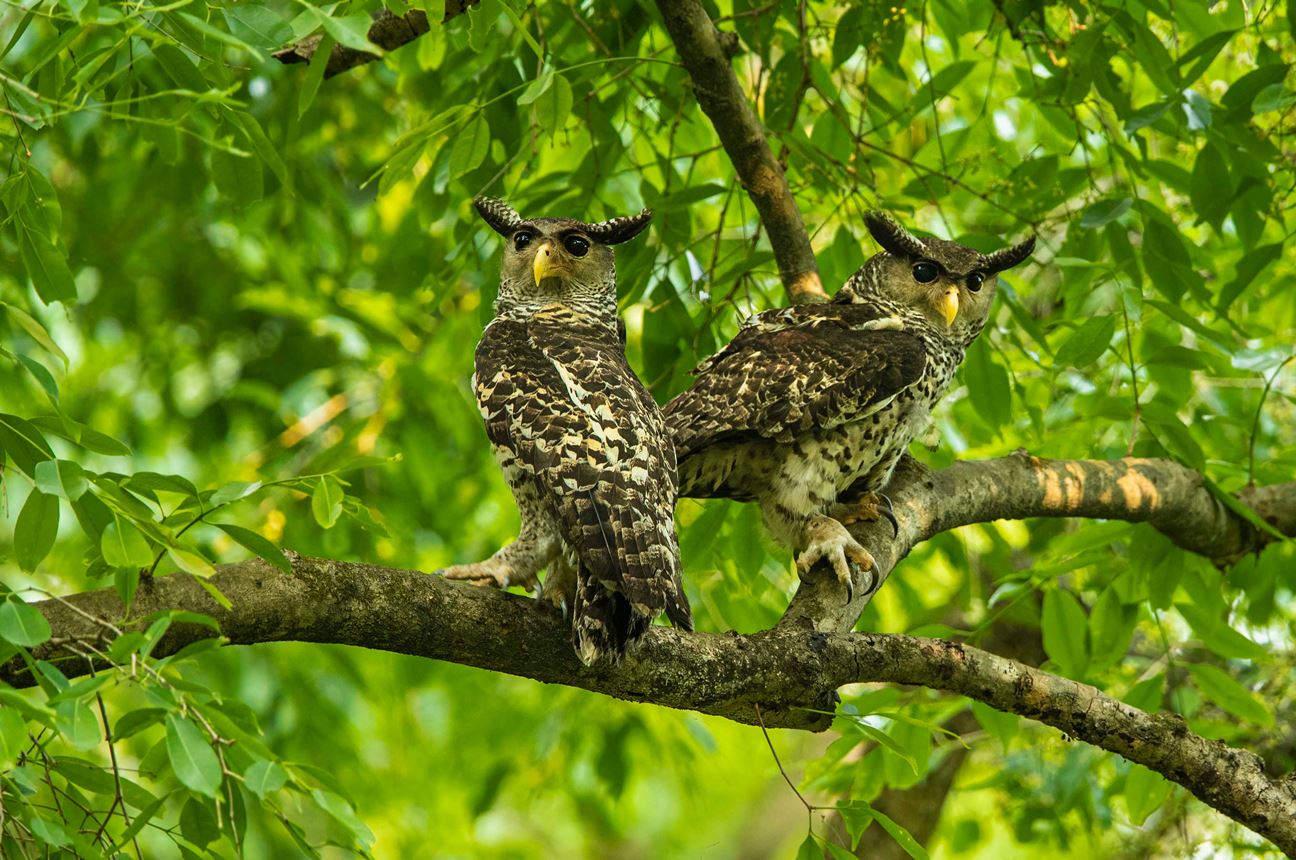
These majestic owls, also known as Forest Eagle-Owl, are one of the largest owl species. They have a silver-greyish body, a pale-yellow beak, dark black eyes, and horn-like tufts. Though quite difficult to find, there have been sightings in wet temperate forests of South India and Himalayan foothills. These large owls feed on pheasants, small-medium mammals, rabbits, and even fawns of deer species.
Dusky Eagle-Owl
These owls are greyish brown with dark streaks on their underparts, white patches on their shoulders, yellow eyes, and distinctive ears. These birds can be found in varied habitats like desert regions, plains, and dense forests near water. They are prominently spotted on tall trees where they generally wait for their prey – birds, mammals, etc.
Eastern Grass-Owl
These birds resemble the Barn Owl by its heart-shaped face and the same shrill call but have a distinct feature of long and slender legs. They have chocolaty brown and buff-coloured patches on their upper parts and pale spotted underparts. The legs are an adaptation they need to live in marshy lands, farmlands, and open habitats with tall grass. These owls nest on the ground and feed on rodents, insects, and birds.
Rock Eagle-Owl
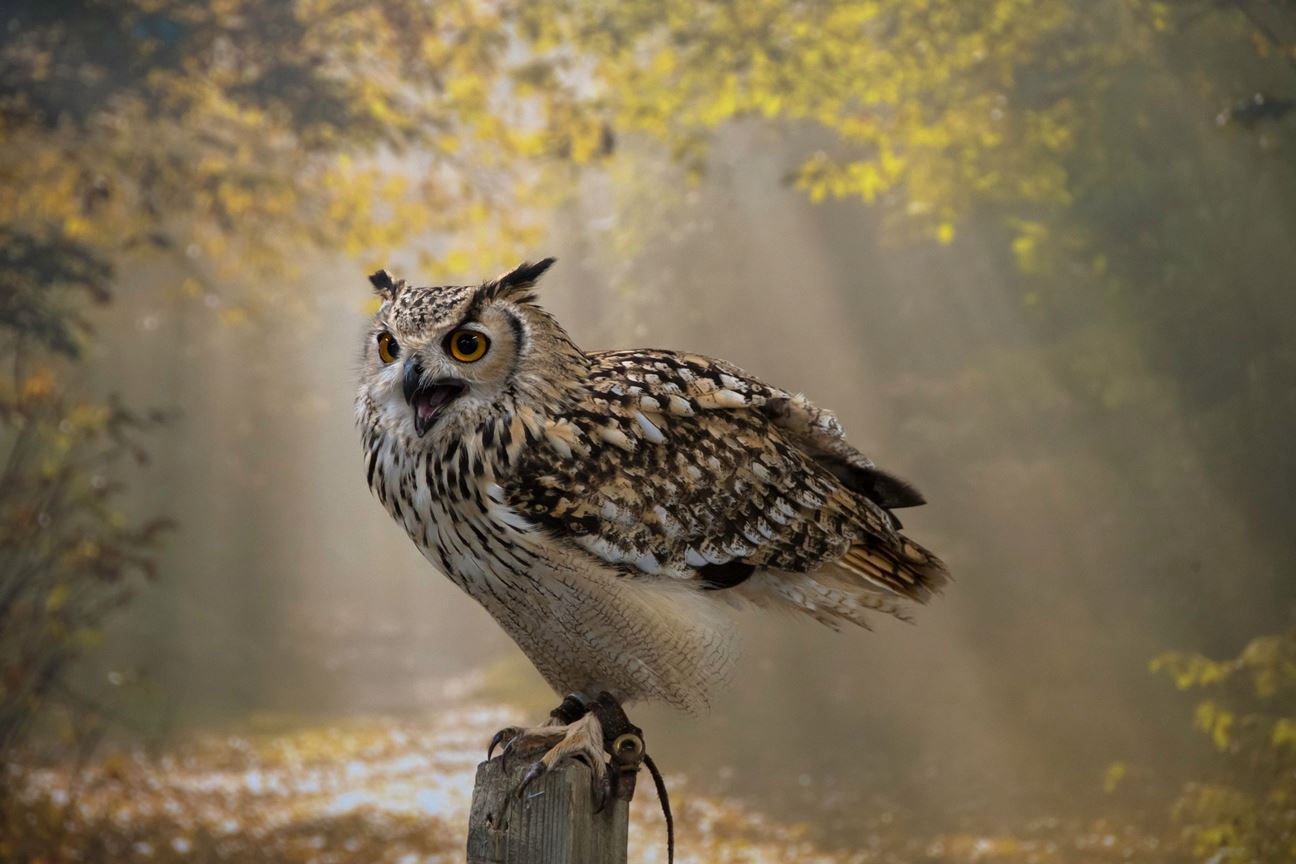
These large ‘horned owls’, also known as the Indian Eagle-Owls, inhabit the rocky hills, semi-deserts, and arid, barren landscapes. Their upperparts are brown with black streaks and bars, whitish underparts with black streaks, and dark ear tufts. Their diet consists of birds, rodents, and sometimes prey as large as a peafowl.
Apart from the above, there are other owl species found in India that are listed below:
- Andaman Masked-Owl
- Andaman Scops-Owl
- Boreal Owl
- Buffy Fish-Owl
- Eurasian Eagle-Owl
- Eurasian Scops-Owl
- Pallid Scops-Owl
- Forest Owlet
- Himalayan Owl
- Indian Scops-Owl
- Little Owl
- Long-eared Owl
- Mottled Wood-Owl
- Mountain Scops-Owl
- Nicobar Scops-Owl
- Oriental Bay-Owl
- Pallid Scops-Owl
- Short-eared Owl
- Sri Lanka Bay-Owl
- Tawny Owl
These beautiful and majestic birds need our attention. It's high time we help them get over their 'bad omen' reputation. They are an important part of our ecosystem and let us keep it that way. Remember, the only way we can help is to keep educating everyone and letting the superstitions go.